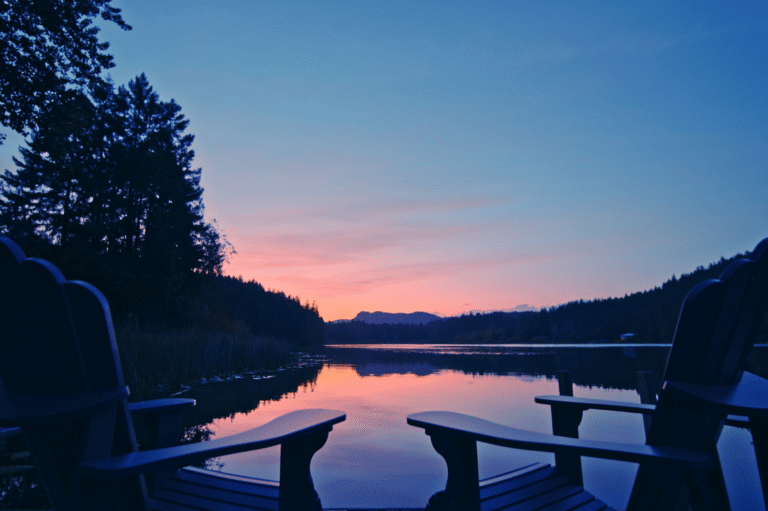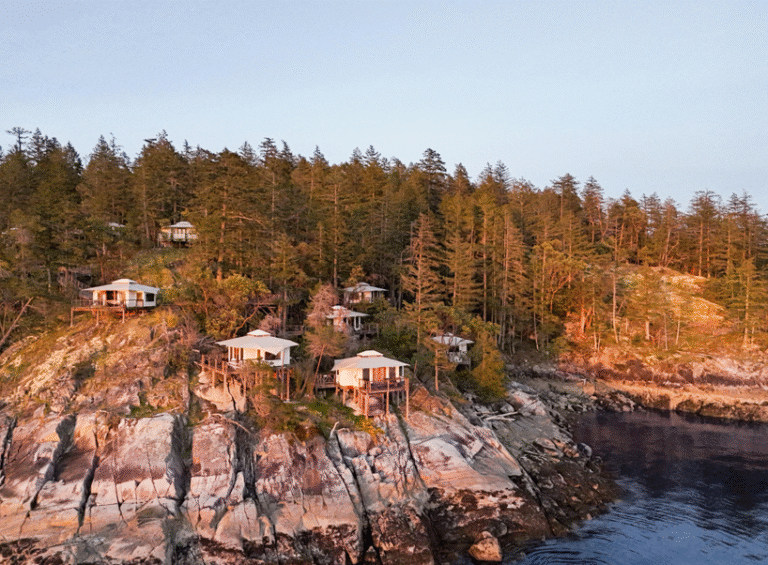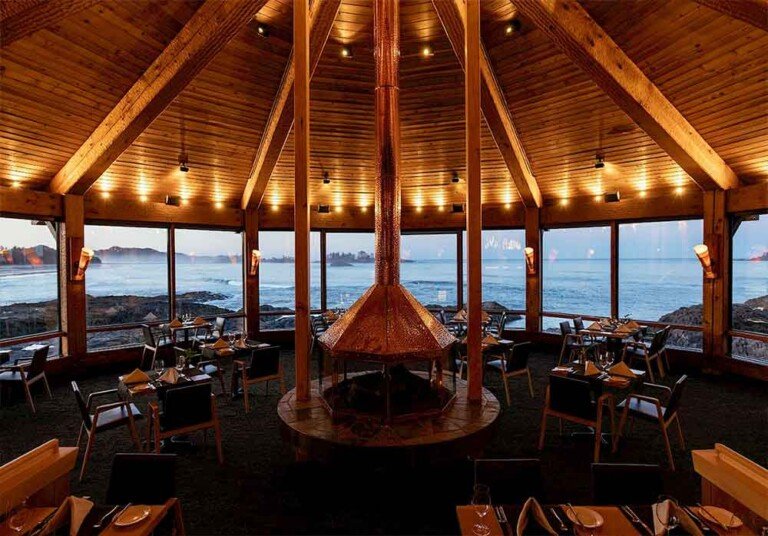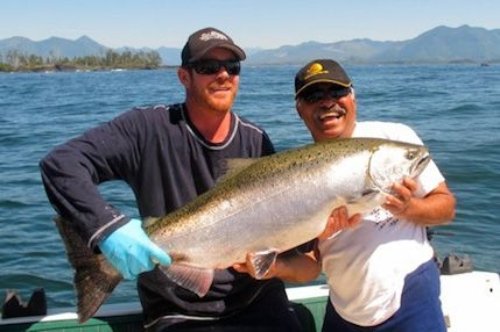At the head of a splendid fjord rippled with waterfalls is Skagway, Gateway to the Klondike, considered the northern most point in Southeast Alaska. Geographically the largest city in Alaska, at 455 square land miles, Skagway was the first incorporated city in Alaska, incorporated on June 28, 1900.
The meticulous frontier town looks and feels much the same as it did during the Gold Rush years and remains one of the best-preserved living tributes to that era. Sidewalks are made of wooden planks, boardwalks and false-front buildings line historic Broadway, the main street through town, and the sounds of barroom pianos and boomtown crowds ring out in the night: a place where the romance and excitement of yesteryear linger around every street corner. Skagway is famous for its hospitality.
Although there were rumors of gold in Klondike region, serious activity didn’t start until George Carmack, Kate Carmack and Skookum Jim made a major find on Rabbit Creek in 1896. Prospectors drifted in steadily until two ships returned to the contiguous states in July of 1897 with more than three tons of gold combined, setting off the famous Klondike Gold Rush.
By mid-1898, the towns of Skagway and Dyea had grown to about 9,000 and 4,500 inhabitants, respectively. Many who didn’t find riches in gold made money by starting business in these “boomtowns.” After the rush, Skagway lost more than half its population in two years, which finally shrank to less than 1,000. Because of its role as a transportation hub, it managed to survive, unlike Dyea, which quickly died out completely.
Skagway’s history and spectacular natural setting combine to create unparalleled sightseeing and recreation opportunities. Organized tours of Skagway may include stops at the Trail of ’98 Museum, Gold Rush Cemetery, and viewing Skagway from the lookout perched on a mountainside above the city. Visitors can explore nature on the local trails, tour the Dyea townsite with a Ranger, or hike the Chilkoot Trail.
Population: 841
Location: Skagway is located in the Upper Lynn Canal in Southeast Alaska, 80 air miles (128 kms) from the Alaskan state capital of Juneau, and 110 miles (176 kms) from Whitehorse in the Yukon Territory of Canada. Skagway is accessed by land, sea and air.
Road and Rail: Seaside Skagway is accessed by road from the Alaska Highway, south via the South Klondike Highway. The scenic route between Whitehorse and Skagway is served by both motorcoach and rail. A ticket on the historic White Pass and Yukon Route railroad includes bus service between Whitehorse and Fraser, British Columbia via the Klondike Highway. At Fraser you’ll board the narrow-gauge railroad for the rest of your journey to Skagway. This is a spectacular trip over White Pass and the famous Trail of ’98 Gold Rush route.
Sea: Skagway is the northern terminus of the Alaska Marine Highway System. A fleet of modern, car-carrying vessels serves all of Southeast Alaska. Northbound travellers can access the system at Bellingham, Washington and Prince Rupert, British Columbia; southbound travelers usually embark at Haines or Skagway. Each vessel has an observation lounge, bar, cafeteria and a solarium where camping is allowed free of charge. Mainline vessels also feature stateroom accommodation. Almost all of the cruising lines calling on Alaska include Skagway in their summer itineraries.
Air: Skagway is a 45-minute commuter flight from Juneau, the state capital and primary domestic air entry point for Southeast Alaska. Juneau is served by Alaska Airlines and three local air carriers that offer several flights daily between Juneau and Skagway. Whitehorse, Yukon is also a convenient point of entry for air arrivals. Scheduled air service is available between Whitehorse, Juneau and Anchorage.
Klondike Gold Rush National Historic Park celebrates the Klondike Gold Rush between 1897 and 1898 through 15 restored buildings within the Skagway Historic District. The park also administers the Chilkoot Trail and a small portion of the White Pass Trail. Included in the park is a portion of the Dyea Townsite at the foot of the Chilkoot Trail.
The Mascot Saloon at the Klondike Gold Rush National Historic Site exhibits a complete historical bar acquired by the Harpers Ferry Center curators and shipped to Alaska for installation, complete with bottles and glasses. Located on Broadway, the Mascot Saloon dates back to the late 1890s. Although the District of Alaska was officially dry during the “Gay 90s” some 80 saloons and breweries sprang up in Skagway to quench the stampeders’ thirst.
The Skagway Museum & Archives, also known as the Trail of ’98 Museum features exhibits detailing the fortunes won and lives lost among the rough and ready men who gambled everything on a grubstake. The “The Days of ’98 Show with Soapy Smith” recreates Skagway’s history and has been running since the early 1930s. The historic museum is located in Arctic Brotherhood Hall.
The Corrington Museum of Alaskan History (Corrington Ivory Museum) at 5th and Broadway tells the history of Alaska from pre-historic times to the present. More than 40 engraved walrus tusks and other exhibits detail events that shaped the evolution of the 49th state.
Walking Tour of Skagway: The town is small and good for walking. Visitors can pick up brochures for a self-guided walking tour of Skagway at the Information Center on 5th between Broadway and State. The tour leads visitors through the town’s residential, industrial, and outlying areas, highlighting Victorian homes, Skagway’s famous gardens, and the railroad yards. See where Frank Reid and con man Soapy Smith were both laid to rest at the Gold Rush Cemetery.
The White Pass & Yukon Route Railway is known as the “Scenic Railway of the World”. Built in 1898 during the Klondike Gold Rush, this narrow gauge railroad is an International Historic Civil Engineering Landmark. Travellers can experience the breathtaking panorama of mountains, glaciers, gorges, waterfalls, tunnels, trestles and historic sites from the comfort of vintage parlor cars. Train trips include excursions to White Pass Summit, Lake Bennett, Sunday Steam Summit, and Fraser Meadows. Combination train and motorcoach trips from Skagway operate to Whitehorse in the Yukon and Fraser in British Columbia.
The Gold Rush Cemetery and Reid Falls are located about 1.5 miles from the Historic District. A cemetery guidebook can be purchased in town which relates the history of the cemetery and some of the colourful characters buried there, including desperado Soapy Smith and town hero Frank Reid. The falls, named after Reid, are a short walk up the hill.
The Klondike Gold Dredge features a reassembled gold dredge that worked the Sixtymile District near Dawson City. It first arrived in the north in Skagway in 1941, and was transported on the railroad and steamers to the Klondike. It was transported back to its home port of Skagway in 1999-2000. The Klondike Gold Dredge is located five minutes from downtown, along the river about a quarter-mile after crossing the bridge.
Hiking: The Chilkoot Trail is the only National Park Service hiking trail in Klondike Gold Rush National Historical Park. The most challenging way to follow in the footsteps of the stampeders is by hiking the 33-mile-long Chilkoot Trail, accessible only on foot. It is a difficult hike and usually takes three to five days. The trail begins at the Taiya River bridge near the Dyea townsite and travels over the Chilkoot Pass to Lake Bennett. Before the gold rush, both the White Pass trail and the Chilkoot Trail were used by Tlingit and Tagish people to trade goods from the coast to the interior.
Day Hikes from Skagway include hikes to Gold Rush Cemetery and Lower Reid Falls (2 hours, 4 miles/6.4 km round trip), Sturgill’s Landing (4-5 hours, 7 miles/11 km round trip), Lower Dewey Lake (1-2 hours, 0.7 mile/1.1 km to the lake), Icy Lake and Upper Reid Falls (3-4 hours, 7 miles/11 km round trip), Skyline Trail to AB Mountain (5 hours round trip), and the easy stroll out to Yakutania Point (1-2 hours, 1-2 miles/1.5-3.5 km round trip).
The small Molly Walsh Park on 7th Avenue is a great play park for kids. Pullen Creek Park at the boat harbor is a good spot to picnic or fish for pike and silver salmon.
The Skagway Overlook at Mile 2 on Dyea Road provides a wooden bench and a wonderful view of the downtown Skagway district and waterfront, and the peaks above Skagway. Visitors can drive or walk to the turnoff and platform, which was originally built by the U.S. Army during the Second World War.
Cruise Lines: Almost all of the cruising lines calling on Alaska include Skagway in their itineraries. Whether you are on a 7-day one-way cruise or a longer excursion that includes overland travel, you will probably stop in Skagway. Ask your travel agent or cruise operator if Skagway is included in the cruise itinerary.
South of Skagway is Juneau, the Alaska state capital. To combine the best of flight-seeing and cruising, visitors can fly to Skagway and return to Juneau by the state ferry system. An excursion from Juneau can be completed in one day, thanks to the long summer days.






